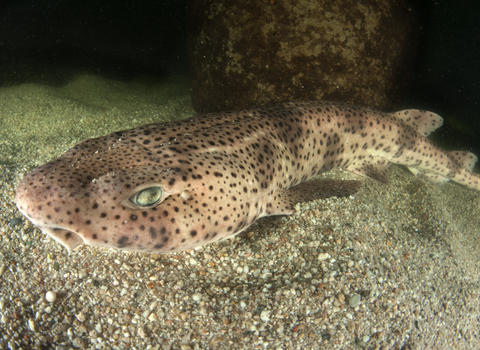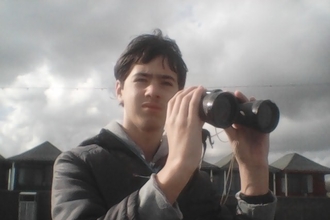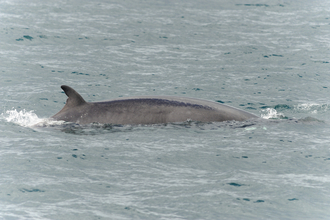
Large-spotted catshark ©Peter Verhoog
Nursehound
The nursehound is a nocturnal predator, hunting smaller fish close to the seafloor.
Scientific name
Scyliorhinus stellarisWhen to see
Present all year round.Species information
Statistics
Length: Up to 160 cmConservation status
The nursehound is listed as Near Threatened by the IUCN Red List.
Habitats
About
Nursehounds like to stay close to the sea floor, living in rocky areas with lots of algae. They hunt at night, feeding on cephalopods (like squid and octopus), crustaceans (like crabs and large shrimp), smaller fish and even other sharks.During the day they hide in holes and crevices in the rock, with several sharks sometimes resting in the same crevice.
The nursehound is also known as the greater-spotted catshark, bull huss, greater-spotted dogfish, and rough hound shark – that’s a lot of names for one species!





